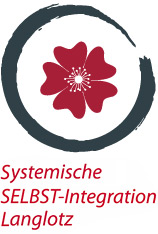Developmental trauma and the role of the parents’ „false selves“
Philipp Kutzelmann, February 2021
Translation: Anne Verena Groß
In the last month we have had the experience that the key to a healthy demarcation from the parents is often that the client is given the opportunity in the constellation to see and feel the true self of the mother and/or the father. For this purpose he/she takes the figure of “mother’s true self” to his/her heart and then feels – often for the first time – what it is like when mother’s unconditional love is allowed to flow from heart to heart without problems or obstacles in the way. Even if he/she could never – or only seldom – feel loved in this way by the mother, through this imagination he/she can make this important experience: It is part of her innate basic potential that he/she can receive love and that he/she is worth being loved for his-/herself sake. The core of one’s own being is “awakened” – this is the basis for an “intrinsic self-esteem”. After that, it is often very easy to differentiate yourself from your parents – it feels playful and healthy.
This shows that there is a deep need in a child to meet the parents “from self to self”. A child searches for the true self of the mother and the father. Probably because they already feel intuitionally this potential in themselves and would like this to be recognized and greeted with appreciation. From another self that is just as unique as one’s own.
This longing is probably also the “motor” for a child’s desperate survival strategies – being a substitute for lost people, taking on other people’s burdens, adapting to the needs of others, etc. – in order to perhaps get the love and approval of the parents after all. And it is the motor for the tendency of not being able to let go of the burdened mother – as if the child has not yet received everything from her, as if it would lose something of value when it lets go of the mother.
Unfortunately this self to self encounter is not always possible and easy to get. Often the parents are not in contact with their own true selves. The child then does not encounter an attentive and benevolent presence, but a woman who – mostly due to trauma – is trapped in survival mechanisms and who has learned to orientate herself more towards these and the expectations of others than towards her own self. And who often expects from her child what she herself was unable to experience as a child: affection, encouragement, relief.
Instead of mother’s “true self”, a child experiences (almost) only mother’s false self, whose actions and behaviors are determined by the emotional wounds from mother’s past. Helplessly and dependent on this mother, the child adapts to this “false self” of the mother. All the attention is with the mother and her trauma. This is important for the child’s survival because any behavior that could re-trigger this trauma it tries to avoid. It lives in an attitude of control, of “having to keep an eye on everything”, of “being responsible for everyone”. An enormous self-overtaxing that – necessarily – fails again and again, so that the child gets into a constant vicious circle of overestimating and humiliating itself.
This is extremely painful for a child and is often experienced as threatening, confusing or even devastating. Where it desires contact with a loving and open presence, it encounters a facade of the false self, the whole function of which is to survive, while the suffering of the past is concealed and recorded at the same time. But not only that: The encounter with mother’s false self suggests to the child that his true self is also false – or that it is dangerous / false if it connects with the true self.
This dilemma can easily be symbolized and made tangible in the context of a constellation, e.g. by configuring the mother’s false self and mother’s trauma in addition to the mother. This often results in extremely meaningful images. For example, a client of mine put his mother’s false self right in front of him. He put his own self-parts in one corner of the table, and his mother’s true self in the other. When he looked into the constellation picture, a scene from childhood came to him. The mother had just behaved very irrationally again and that had scared him so much that he had to make himself completely invisible. “I have to fully adapt to this false self – otherwise something bad will happen. And at the same time I have a shitty anger.“
But as painful as this realization was for him, he could now see what he could not understand as a child. He realized that it was the mother’s hard fate that made her function all her life and let her act from the wrong self. And he could see that mother’s trauma is not part of her identity – and that it doesn’t belong in his room either. This enabled the way to become free to one’s own true self. After feeling mother’s true self, he could feel that it is healthy and healing if he protects himself from mother’s “false self” by clearly delimiting himself. “That’s where this shit rage belongs. I always thought I hated my mother. I just hated that she was often not quite with herself.”
Through this process of solving the problem, the client finds his or her own self and can let go of the mother – with respect and (sometimes for the first time!) also with love! Then it is no longer the “trauma app” – the connection through the trauma that connects the generations – but the connection from “self to self”.
Or: instead of the wrong currency (false self) back to the gold standard (true self).
